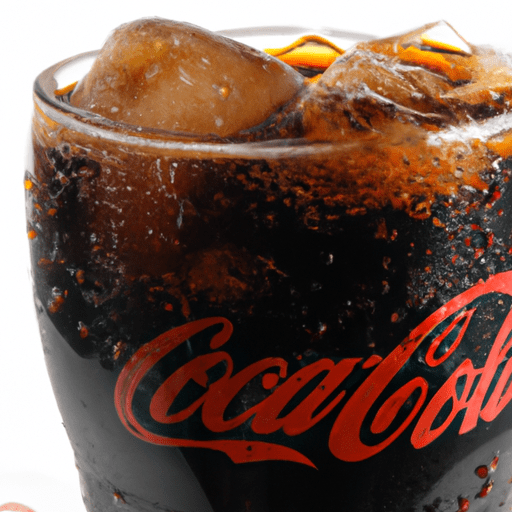Exploring the World of Cola Flavored Carbonated Beverages
If we were to seek out the epitome of carbonated beverages, it wouldn’t be long before we stumble upon the iconic cola flavor. With its distinct taste and effervescence, cola has become a cultural touchstone, captivating taste buds and refreshing parched souls for generations. But have you ever wondered about the origins, uses, and nutritional value of this beloved fizzy drink? Join us on a journey through the fizzy world of cola flavored carbonated beverages.
An Invigorating Taste Experience
Cola flavored carbonated beverages are characterized by their overwhelming sweetness balanced with a hint of citrus and spiced undertones. The magic lies in the harmonious blend of natural and artificial flavors, giving cola its signature taste. Caramel and vanilla notes dance on the tongue, seducing our senses and leaving us yearning for more.
Common Uses in Cooking
Cola’s unique flavor profile has made it a versatile ingredient in the world of cooking. From marinades to glazes, it adds a delightful twist to both sweet and savory dishes. Here are a few common culinary uses of cola:
Marinades: Cola-based marinades tenderize meat while infusing them with a subtle sweetness. It works wonderfully with chicken, pork, and even beef, giving a delightful caramelized finish during grilling or roasting.
Barbecue Sauces: Cola contributes depth and complexity to barbecue sauces. The rich combination of sweetness, tanginess, and spices pairs beautifully with ribs, pulled pork, and grilled vegetables.
Baking: In the realm of baking, cola can be a secret ingredient that elevates your creations. From cakes and cupcakes to brownies and cookies, cola can enhance flavor and moisture, adding an element of surprise to your baked goods.
Cocktails: Cola is an essential component in numerous classic and contemporary cocktails. It harmonizes with spirits like rum, whiskey, and vodka, creating refreshing libations enjoyed by many.
Nutritional Profile
While cola undeniably offers a delightful sensory experience, one should be mindful of its nutritional value. A standard cola flavored carbonated beverage, in an eight-ounce serving, typically contains:
- Calories: 97
- Carbohydrates: 26 grams
- Sugar: 26 grams
- Caffeine: Varies, but generally around 24-46 milligrams
It’s important to remember that excessive consumption of cola can lead to increased sugar intake and potential health concerns. Moderation is key to enjoy cola without compromising a balanced diet.
History and Interesting Facts
The story of cola flavored carbonated beverages dates back to the late 19th century. In 1886, pharmacist John Pemberton created the world’s first cola drink, which later became known as Coca-Cola. Over the years, countless brands and variations have emerged, each with its unique take on the classic cola flavor.
Interestingly, the exact recipe for cola remains a closely guarded secret. The concoction of flavors and spices is known only to a select few trusted individuals within each brand’s inner circle.
Did you know that cola drinks were originally crafted as “health tonics” and were even sold in pharmacies? While their medicinal claims have long since dissolved, their popularity as a refreshing beverage has only grown stronger.
A Fizzy Finale
Cola flavored carbonated beverages continue to captivate us with their effervescence, sweetness, and versatility in the culinary world. From marinades to cocktails, they add a touch of magic to our dishes and a sparkle to our gatherings.
However, it’s essential to remember that moderation is key when indulging in these fizzy delights. By savoring the cola experience responsibly, we can pay homage to its captivating history while still enjoying the simple pleasure of a bubbly and invigorating beverage.
Cheers to the world of cola flavored carbonated beverages, where enchanting flavors, intriguing culinary possibilities, and cool refreshment collide!
Origin:
- Cola flavored carbonated beverages originated from the original cola drink, Coca-Cola, which was created by pharmacist John Pemberton in 1886.
Common Uses:
- Cola flavored carbonated beverages are primarily consumed as a refreshing beverage on their own.
- They are often used as mixers for alcoholic beverages, such as rum and cola (e.g., Cuba Libre) or whiskey and cola (e.g., Jack and Coke).
Nutritional Information:
- Cola flavored carbonated beverages are typically high in sugar and calories. The exact nutritional content may vary between different brands and variations.
- They do not provide any significant nutritional benefits, as they are mainly consumed for their taste and thirst-quenching properties.
Unique Properties and Historical Significance:
- The flavor of cola drinks often includes a combination of spices, such as cinnamon, nutmeg, and citrus oils, which give it a distinct taste.
- The original Coca-Cola recipe contained a small amount of cocaine derived from the coca leaf. However, the use of cocaine as an ingredient was discontinued in 1903.
- Coca-Cola played a significant role in popular culture and marketing. The drink and its iconic branding have become globally recognized symbols.
- Many cola flavored carbonated beverages, including Coca-Cola, have been the subject of various urban legends and myths, such as claims that they can dissolve teeth or rust nails. However, these claims are largely exaggerated and not supported by scientific evidence.




Use the share button below if you liked it.
It makes me smile, when I see it.